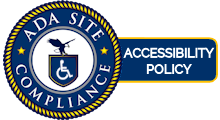Traffic and Transportation Planning – COMMON QUESTIONS AND ANSWERS FOR EVERYDAY TRAFFIC OPERATIONS IN THE CITY OF SANTA CLARITA
Q1: WE HAVE MOTORISTS SPEEDING ON OUR CITY STREETS. HOW CAN YOU HELP US WITH THIS PROBLEM?
A1: Speeding is a behavioral issue that comes out of the demand of our increasingly busy lives. People often drive faster from their homes to their destinations and vise versa. The City’s Traffic and Transportation Planning receives several hundred complaints each year from concerned citizens regarding speeding, especially on their residential streets. 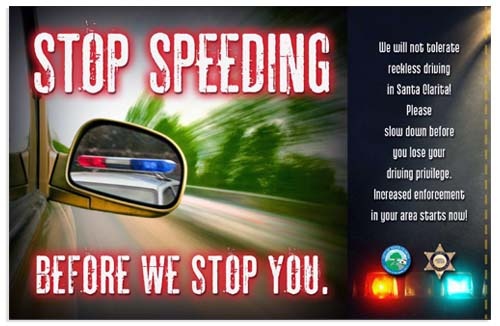
The City of Santa Clarita implements the ftheollowing actions to respond to speeding complaints:
- The City has implemented the use of a PARET unit (Public Awareness Radar Educational Trailer) to remind motorists of their responsibility to drive safely. The trailer displays the speed at which a vehicle is travelling in contrast with the posted speed limit for the zone. These units have been proven to be effective in reducing vehicular speeds in many areas. and;
- The City works with the Los Angeles County Sheriff’s Department to provide selective speed enforcement in different areas of the City. However, limited resources prevent them from targeting all areas at all times.
Q2: CAN THE CITY INSTALL SPEED HUMPS OR SPEED CUSHIONS ON MY STREET?
A2: Speed humps have been installed by many California cities and have been approved by the City of Santa Clarita for use in our residential communities. Speed humps can be effective in reducing vehicular speeds on residential streets (25 mph). They can also help to reduce traffic volumes; however, this can sometimes cause a diversion of traffic to nearby residential streets. Other potential negatives concerning the use of speed humps include longer response times for emergency vehicles, increase in noise levels as vehicles decelerate/accelerate at each speed hump, and increased maintenance costs.
In order to address the issue of emergency vehicle response time, the City has decided to utilize a particular type of speed hump, called a speed cushion. Speed cushions are traffic calming devices designed as several small speed humps installed across the width of the road with spaces between them. They are generally installed in a series across a roadway resembling a split speed hump. The design of speed cushions forces cars to slow down as they ride with one or both wheels on the humps. The wider axle of emergency vehicles such as fire engines and ambulances, however, allows them to straddle the cushions without slowing down or increasing response times.
Speed humps/cushions are not intended for use on all streets. They are permitted on residential streets that have a minimum length of 500 feet, posted or prima facie speed limit of 25 MPH, daily traffic volume of at least 1,500 vehicles, and do not exceed a sustained grade of six percent.
Information on the speed hump/speed cushion program is available by clicking here.
Q3: CAN THE CITY LOWER THE SPEED LIMIT ON A PARTICULAR ROADWAY?
A3: State law requires local agencies to establish speed limits based on traffic engineering surveys. The City of Santa Clarita conducts speed surveys Citywide once every five years. These surveys include an analysis of roadway conditions, accident records, and a sampling of the prevailing speed of traffic. The prevailing speed is determined by measuring existing speeds of motorists during free-flow (typically off-peak) within the respective zone. A safe and reasonable speed limit is set at or below the speed at which 85 percent of drivers are moving.
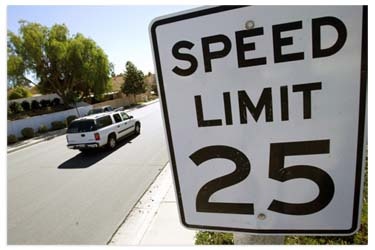 Speed limits set above the prevailing speed are generally considered unreasonable and unsafe. Conversely, speed limits set below the prevailing speed do not provide for the orderly movements of traffic. Lowering the speed limit more than what is considered appropriate is counterproductive, since the Sheriff’s Department will be unable to efficiently enforce speeds. Traffic flowing at a uniform speed results in increased safety and fewer accidents. Drivers are less impatient, pass less often, and tailgate less, which reduces both head-on and rear-end collisions.
Speed limits set above the prevailing speed are generally considered unreasonable and unsafe. Conversely, speed limits set below the prevailing speed do not provide for the orderly movements of traffic. Lowering the speed limit more than what is considered appropriate is counterproductive, since the Sheriff’s Department will be unable to efficiently enforce speeds. Traffic flowing at a uniform speed results in increased safety and fewer accidents. Drivers are less impatient, pass less often, and tailgate less, which reduces both head-on and rear-end collisions.
Citizens often request that the speed limit be lower than 25 mph on residential streets in an effort to slow traffic. The 25-mph speed limit on residential streets is established by State law and set automatically based on conditions defined in the California Vehicle Code. This speed limit, which is often referred to as “prima facie” limit, does not require posting signs for enforcement. If the speed limit on residential streets is lowered more than the prima facie limit, drivers will ignore it and will continue to drive at a speed they feel is safe and reasonable. Other prima facie speed limits include the 25-mph speed limit in a business district, 25-mph in school zones when children are present, and 15-mph in alleys.
Q4: HOW CAN I GET A SPEED LIMIT SIGN ON MY STREET?
A4: In California, the maximum speed limit for passenger cars, trucks and all vehicles towing trailers is 55 mph. However, selected freeways in rural areas may be posted to permit a maximum of 65 mph for passenger cars only. Theses are absolute limits, which may not be legally exceeded under any circumstances.
All other speed limits are called prima facie limits (“on the face of it”) which are deemed reasonable and prudent under normal conditions.
A few prima facie limits are established by the vehicle code, including 15 mph in alleys, at blind intersections and at blind railroad crossings, and 25 mph in business and residence districts. Sign posting is not required for these prima facie zones. There is also a part-time 25mph prima facie limit in posted school zones when children are going to and from school.
Most prima facie limits are established by State and local authorities who are permitted to set speed limits between 25 and 55 on the basis of an engineering and traffic survey. For these prima facie limits sign posting is required
The City installs speed limit signs on all major roadways. However, traffic engineers may recommend that a speed limit sign of 25 mph be posted at the entrance to a residential neighborhood from a major roadway with a high speed limit to get motorist’s attention entering a lower speed zone.
Q5: CAN I GET “CHILDREN AT PLAY” SIGNS INSTALLED ON MY STREET?
A5: Children at Play” signs and similar signs are not recognized by the State of California or by the Federal Highway Administration as an official traffic control device and therefore, are not installed by the City on public streets.
Many people believe that “CHILDREN AT PLAY” signs and similar signs, such as “SLOW,” or “SLOW ENTERING RESIDENTIAL AREA,” enhance the children’s safety, but may not realize that there are many safety concerns about the use of these signs.
“Children at Play” signs send the wrong message to our younger citizens by encouraging them to play within the street. The City discourages this behavior, as a pedestrian’s interaction with automobiles could result in severe traffic safety consequences. In addition, “Children at Play” signs tend to create a false belief for children by letting them assume they are safer where signs are installed. Such signs have been proven to be ineffective in providing added protection for children, and the signs’ presence could negatively affect the children’s safety on our streets.
Unnecessary signs can confuse and annoy drivers and foster disrespect for all signs. Signs in accordance with the State of California’s Traffic Manual can and should be posted for school zones and pedestrian crossings, where a need exists.
The City provides many neighborhood parks and our beautiful Central Park where children can play safely with proper supervision. In addition, the City has many other recreational opportunities for the public, including the Sports Complex and associated Skatepark.
Q6: HOW DO I REQUEST AN ADULT SCHOOL CROSSING GUARD?
A6: All requests for adult crossing guards go through the following process: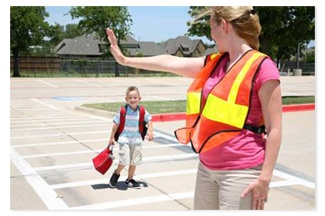
- The initial request for a crossing guard is submitted to the school principal.
- The school principal determines if the request for a study is needed.
- The school principal forwards the “Request for a Crossing Guard Warrant Study” to the school district.
- The school district approves and submits the “Request for a Crossing Guard Warrant Study” to the City of Santa Clarita.
- The City Traffic Division conducts a traffic warrant study.
- The City Traffic Division study findings are sent to the school district.
- If the traffic warrant study is validated, the request is submitted to the City Council for approval in the City budget.
- City of Santa Clarita Emergency Management administers the crossing guard program.
Q7: HOW DO I REQUEST A CROSSWALK?
A7: A crosswalk is the portion of a roadway at an intersection that is the extension of the sidewalk and curb lines of the intersecting streets, or is any other portion of a roadway marked as a pedestrian crossing by painted lines. Crosswalks are either “marked or unmarked.” A marked crosswalk is delineated by white or yellow painted markings placed on the pavement. It is the City’s policy not to paint or mark crosswalks at locations where traffic is not controlled by stop signs or traffic signals. In general, crosswalks should be viewed as channelization devices rather than safety devices. Marking a crosswalk does not always increase the safety of pedestrians. Pedestrians may step off the curb into the crosswalk expecting the approaching drivers to stop. The crosswalk markings, however, may not always be readily apparent to drivers from a safe stopping distance. As a result, drivers sometimes are unable to or fail to stop, causing an accident. Although drivers must yield the right-of-way to pedestrians at crosswalks, two painted lines do not provide protection against an on-coming vehicle.
Q8: CAN YOU INSTALL A STOP SIGN TO REDUCE SPEEDING?
A8: The City often receives inquiries about installing a stop sign at intersections as a way to reduce speeding and accidents. Stop signs, however, are usually installed to regulate traffic flow and improve safety. Their main purpose is to provide right-of-way control at intersections and to reduce certain types of accidents.
The City follows the State of California Department of Transportation guidelines and conditions for installing a stop sign at intersections. Any of the following conditions may warrant a multi-way stop sign installation: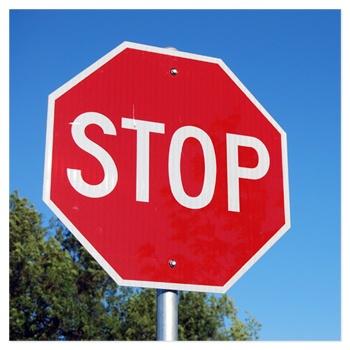
- When the total vehicular volume entering the intersection from all approaches averages at least 500 vehicles per hour for any eight-hour period of an average day, and the combined vehicular and pedestrian volume from the minor street averages at least 200 units per hour for the same eight hours.
- When five or more accidents of the type correctable by a multi-way stop installation occur within a 12-month period. Such accidents include right- and left-turn collisions, as well as right-angle collisions.
- The City of Santa Clarita has adopted its own rules and regulations by resolution to modify the warrants for the installations of multi-way stop signs in residential areas to reflect lower volume traffic conditions. These warrants allow for the installation of multi-way stop signs on residential intersections when one of the following conditions is met:
- When the total vehicular volume entering the intersection from all approaches averages at least 300 vehicles per hour for any four-hour period of an average day, and the combined vehicular and pedestrian volume from the minor street averages at least 120 units per hour for the same four hours.
- When three or more accidents of the type correctable by a multi-way stop installation occur within a 12-month period, or five or more collisions occur within a 24-month period. Such accidents include right- and left-turn collisions, as well as right-angle collisions.
- When the through traffic volume on the main street/uncontrolled street exceeds 2,000 vehicles per day, and this traffic volume is at least 25 percent higher than that on similar adjacent parallel streets, and when the distance between current stop signs exceeds 750 feet.
The City does not typically use stop signs at T-intersections in residential areas. The right-of-way at T intersections is covered under the California Vehicle Code, which requires that motorists on the T-leg yield to motorists on the through roadway. Stop signs are generally used on the minor leg of a T-intersection only if there is significant traffic volume on the through street.
Q9: HOW DO I GET A TRAFFIC SIGNAL? WHAT IS INVOLVED?
A9: Citizens can utilize the City’s Resident Service Center to request the installation of a traffic signal at a particular intersection.
Traffic engineers follow certain State guidelines and criteria called “warrants” to evaluate the intersection for a signal installation. Factors that are considered in the evaluation include traffic and pedestrian volumes, accident history, speeds, delays, intersection configuration, proximity to signalized intersections, schools and senior citizen facilities, and relevant site-specific factors. The cost of a traffic signal is approximately $300,000 per intersection and more than $10,000 a year for maintenance and energy costs. Sometimes traffic signals are installed as part of a private development to mitigate traffic impacts. Their location must also meet the State guidelines and “warrants.”
Q10: HOW DO I GET A LEFT-TURN SIGNAL?
A10: Left-turn signals are called “protected” left-turn signals. They can be helpful in giving drivers the right-of-way to complete left-turns free of any other traffic conflict, but when there is no opposing traffic, they can cause unnecessary delays. The City uses State guidelines for installing left-turn signal phasing at existing and proposed intersections. These guidelines consider traffic volume, accident history, traffic delay and other elements, such as sight visibility. The guidelines ensure that treatments, such as left-turn signal phasing, are consistent from one intersection to the other based on traffic conditions.
Q11: CAN YOU SYNCHRONIZE THE SIGNALS ALONG A PARTICULAR ARTERIAL?
A11: Traffic signal synchronization is a method of timing groups of traffic signals along an arterial to provide smooth movement of traffic with minimal stops. The quality of the resulting progression is a function of the spacing of the signals, the prevailing speeds, the amount of traffic coming in and out of driveways between traffic signals, the uniformity of intersection sizes, and the cycle length.
Not all City streets warrant synchronization. Typically, a street is selected for synchronization if it carries a certain amount of traffic along the arterial during peak hours. Most of the City’s major streets are selected, like Soledad Canyon Road, Whites Canyon Road, portions of Sierra Highway, Valencia Boulevard, Lyons Avenue, and portions of McBean Parkway, Orchard Village Road, portions of Bouquet Canyon Road, and Seco Canyon Road. In most cases, synchronization is active from 6:00 a.m. to 7:00 p.m. during weekdays. The individual signals operate on a “first-come-first-served” or traffic activated basis outside of these hours, or all the time if a street is not selected to be synchronized.
Q12: I CANNOT SEE THE ONCOMING TRAFFIC AT A PARTICULAR INTERSECTION OR WHEN EXITING MY DRIVEWAY. CAN YOU HELP?
A13: Traffic Engineering staff usually conduct a field study in the area adjacent to a driveway or at a particular intersection where there is a sight visibility concern, to determine whether or not prohibition of parking adjacent to the driveway or near the intersection is recommended. In addition to the study, staff checks accident records for the location for the past 12-month period to determine if the collision data supports the need to remove any parking spaces.
In all cases, motorists should exercise caution when leaving private property or a side street. The 2002 California Vehicle Code (Division 11, Chapter 4, Section 21804(a)) states that motorists entering a highway from public or private property shall yield the right-of-way to all traffic on the highway and shall continue to do so until he or she can proceed with reasonable safety. Motorists should move forward toward the edge line of the parking lane, thus gaining more visibility to safely exit the driveway or side street.
Q13: CAN I PAINT THE CURB RED AND INSTALL MY OWN TRAFFIC SIGNS ON MY STREET?
A13: Traffic signs and markings shall be placed on public streets only by public authorities or officials having jurisdiction, for the purpose of regulating, warning, or guiding traffic as stated in the California Department of Transportation Traffic Manual (CALTRANS). The City installs curb paint/no-stopping signs, or other traffic signs and markings after careful examination for their needs and impact on City streets. Therefore, all signs or curb markings in the public right-of-way must be installed by the City or with the City’s approval. If these signs are not done by the City or without City approval, they are illegal and cannot be enforced. Furthermore, such actions by an individual present an unnecessary liability in case an accident occurs in the area where these signs or curb markings have been installed illegally, and the City cannot provide records to justify the need for these signs/markings. The CALTRANS Traffic Manual also states that any unauthorized sign placed on the highway right-of-way by private organizations or individuals constitute a public nuisance and shall be removed.
Q14: CAN THE CITY PAINT THE CURB RED IN FRONT OF FIRE HYDRANTS?
A14: The subject of parking next to fire hydrants is addressed in the California Vehicle Code (CVC) in Section 22514, which states, “No person shall stop, park, or leave standing any vehicle within 15 feet of a fire hydrant…”
Since the CVC already states that it is illegal to park within 15 feet of a fire hydrant, whether or not there are signs or red curb, the City is not required to designate the area in front of a fire hydrant as a no-stopping zone. It is generally City policy not to install signs for situations that are already addressed in the CVC.
If there is a pattern of repeated violations by motorists parking next to particular fire hydrants, it can be addressed by increased enforcement by the Sheriff’s Department.
Q15: DOES THE CITY PAINT THE CURBS RED FOR NO-STOPPING ZONES?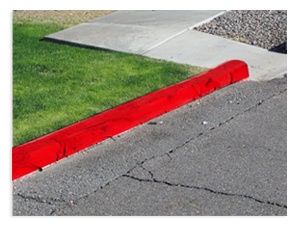
A15: The City is now using no-stopping signs instead of painting the curbs red to prohibit street parking. Signs are easier to keep and maintain. The red curb paint tends to fade overtime and requires periodic maintenance.
Q16: HOW CAN I GET WARNING SIGNS SUCH AS “NOT A THROUGH STREET” AND SIDE ROAD SIGNS ON OUR CITY STREETS?
A16: Traffic staff will investigate the location to determine if the installation of such signs is warranted or needed. Warning signs are normally installed to guide and warn traffic of conditions on or adjacent to a highway or street which would not be readily apparent to drivers.
- The “NOT A THROUGH STREET “ sign may be used near the entrance to a dead-end street or cul-de-sac.
- The “NO OUTLET” sign may be posted at the entrance to a street, which leads to a network of two or more streets from which there is no public outlet.
- The side road signs may be used in advance of a T-intersection, Y-intersection, or four-legged intersections (cross road) where conditions such as roadway curvature make it desirable that the side road be called to the motorist’s attention.

